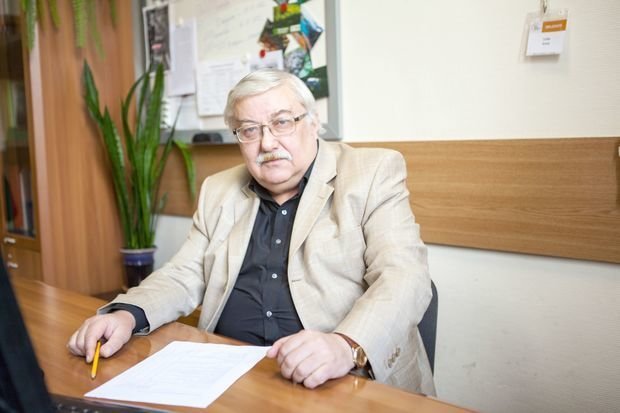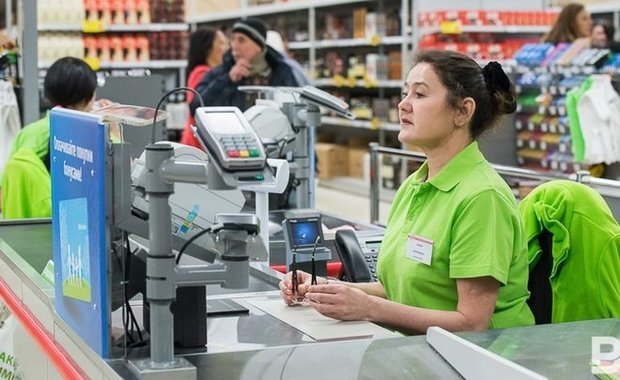''The population began to create reserves in money instead of buckwheat, salt and matches for the first time in the crisis''
Central Bank of Russia announces the transition of the Russians to active consumption
The Central Bank stated that the Russians have completed the transition from saving behaviour, to which they were accustomed due to the crisis, to active consumption. However, experts believe that it is too early to talk about this — it will take another year and a half or two to fully restore the level of consumption. Some of them are convinced that the principle of ''consumption at the expense of savings'' is in the past and call for getting used to the new normality. Read more details in the material of Realnoe Vremya.
Need to change iron
On June 13, Izvestia newspaper published a statement by an unnamed representative of the Central Bank, according to which ''the Russians have completely departed from the saving behaviour model''. On this point, the publication builds positive forecasts about an acceleration of economic growth.
The Central Bank is reported to believe that today citizens, like before the crisis, tend to save less and spend more. This is evidenced by the ratio of savings to available cash income — it has returned to the level of 2013-2014 and now is about 8%. In the medium term, this trend will not go away, the rate of savings will remain in the range of 7-9%.
The growing appetite for consumption, representatives of the regulator say, is connected with the revival of consumer lending, according to the Central Bank, from the beginning of last year to the beginning of 2018 the volume of bank loans to individuals increased by 28% — from 7,21 to 9,23 trillion rubles.

Besides, the Russians believe that now it is the most favourable time to make large purchases, Izvestia cite the words of the Central Bank representatives. Meanwhile, judging by VTSIOM consumer confidence index, the readiness for purchases, which began to decline sharply in the first half of 2014, has not fully recovered yet.
Georgy Ostapkovich, the director of the HSE Centre for Market Research, believes that it is too early to talk about a full recovery of consumer activity. ''Let's start with the fact that it will be possible to return to the pre-crisis level only when salaries and real incomes of the population are fully restored,'' he says. At the current growth rate, this will take another year and a half or two.
''In principle, consumer demand has appeared, but, of course, this is only compensation demand,'' Ostapkovich continues. It is supported mainly by bank loans and is associated with the need to update durable goods. After several years of crisis, people have a ''vital need to change iron, microwave'', and now this deferred demand is taken for well-being.
Instead of salt and matches
At the same time, along with the increased consumption, as seen from the Central Bank's data, the savings of Russians actually only increase. Thus, the volume of bank deposits of individuals (they keep more than 65% of all savings) increased from 24,2 trillion rubles in early 2017 to 25,99 trillion in early 2018. The ratio of deposits to income increased from 44,7% to 47,6%.
The head of the monitoring research department of VTSIOM, Oleg Chernozub, generally disagrees with the point of returning to the pre-crisis level of consumption. Already in 2015, so-called pro-deflationary consensus was formed, when the population deliberately limits its expenses — it remains up to this day. Moreover, it is necessary to get used to it because it is a kind of new normality.

''The model of behaviour with the emphasis on increased share of current costs, which our population practiced throughout the post-Soviet period, was caused to life by the frustration of the monetary economy, instability of rates, high inflation. In other words, over the past 20 years or so, the population has been excessively focused on current costs at the expense of accumulation,'' Chernozub says. But it was during the crisis when the ''important cultural change'' occurred: despite the devaluation of the ruble, the Russians became more willing to make savings.
''For the first time, despite the external signs of troubles, it was in the crisis when the population began to create reserves not in basic necessities, but in money instead of buying buckwheat, sugar, salt and matches. This is a historical fact,'' says Chernozub.
Therefore, he continues, it does not make sense to compare the current situation with the pre-crisis one, ''The focus on saving money — a normal orientation. It'll not go anywhere. And there is nothing unusual in this — unusual were the previous periods of development of our country's economy.''
Chief economist of the rating agency Expert RA Anton Tabakh notes that deposits of the population are growing more slowly than incomes. In addition, he believes, their growth is ''the average temperature in the hospital''. Most likely, savings are increasing of the most profitable layers, ''Those who can save — they continue to save, and those who do not have money – they again begin to take loans.''